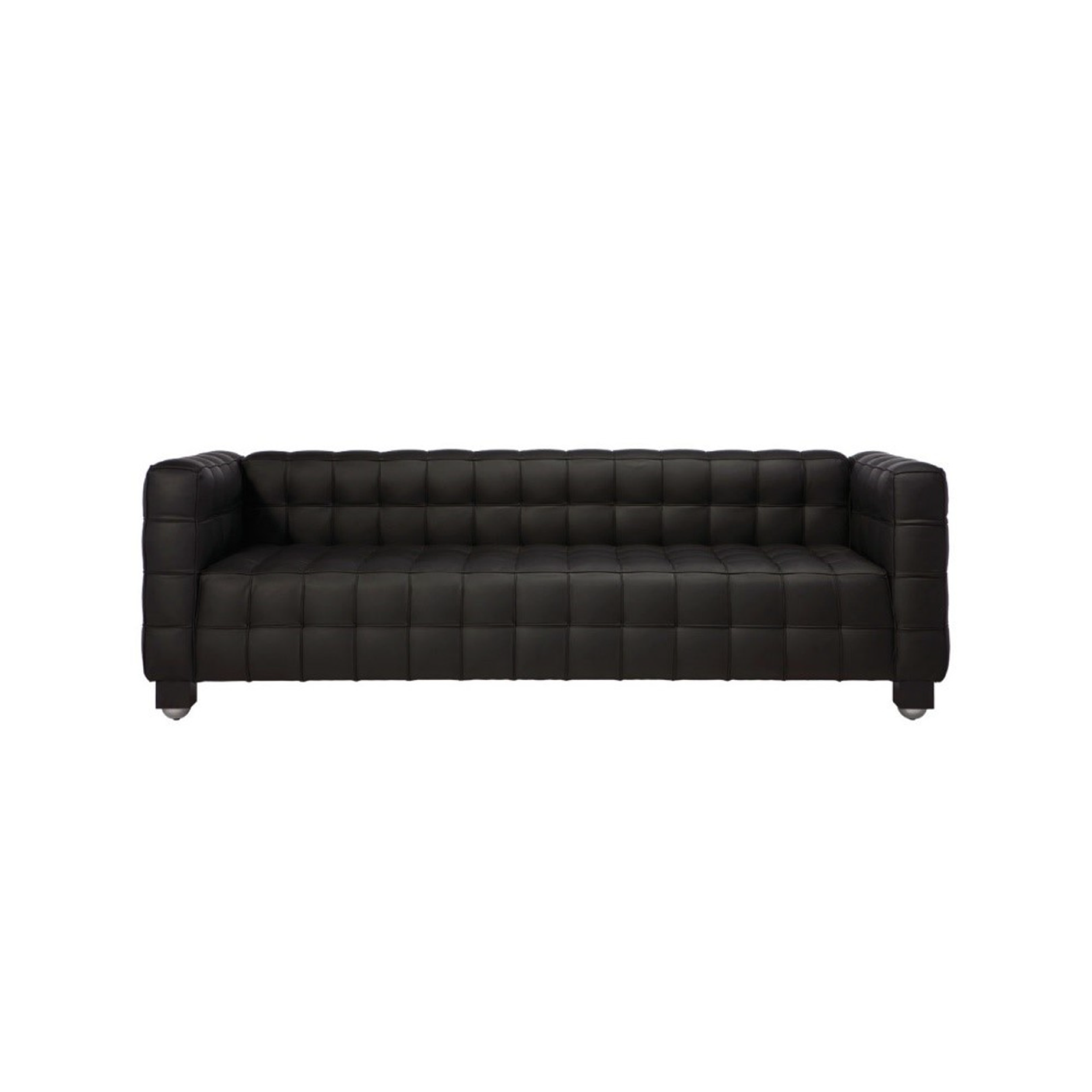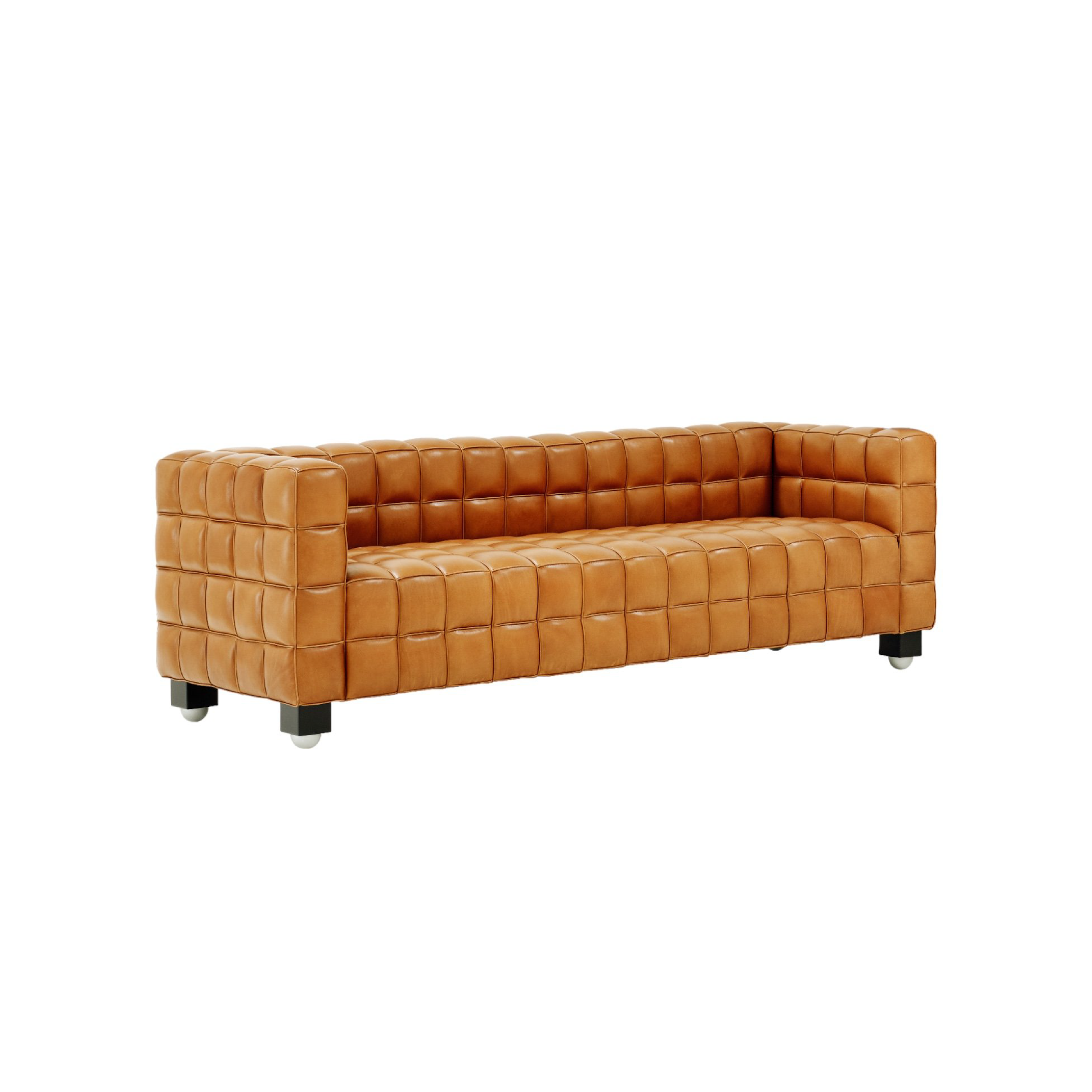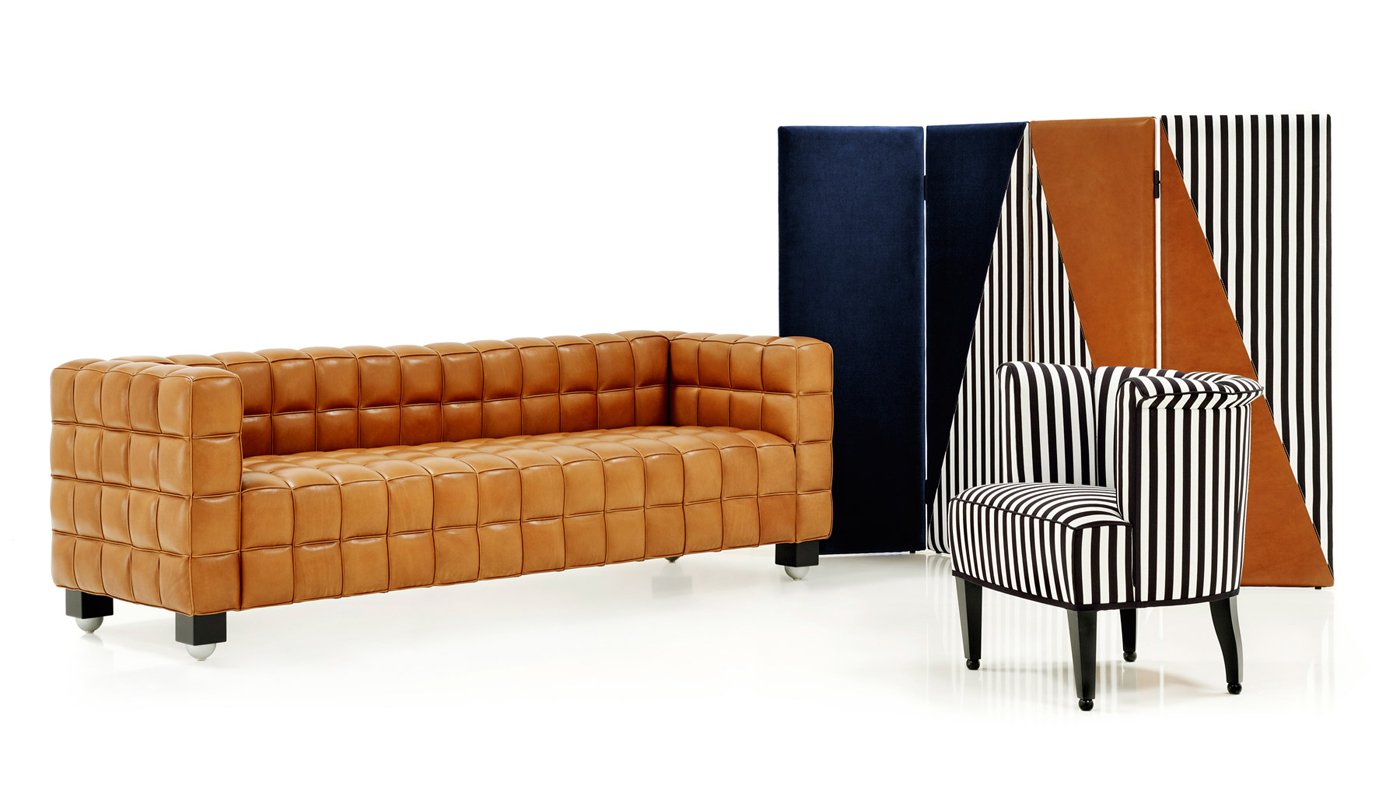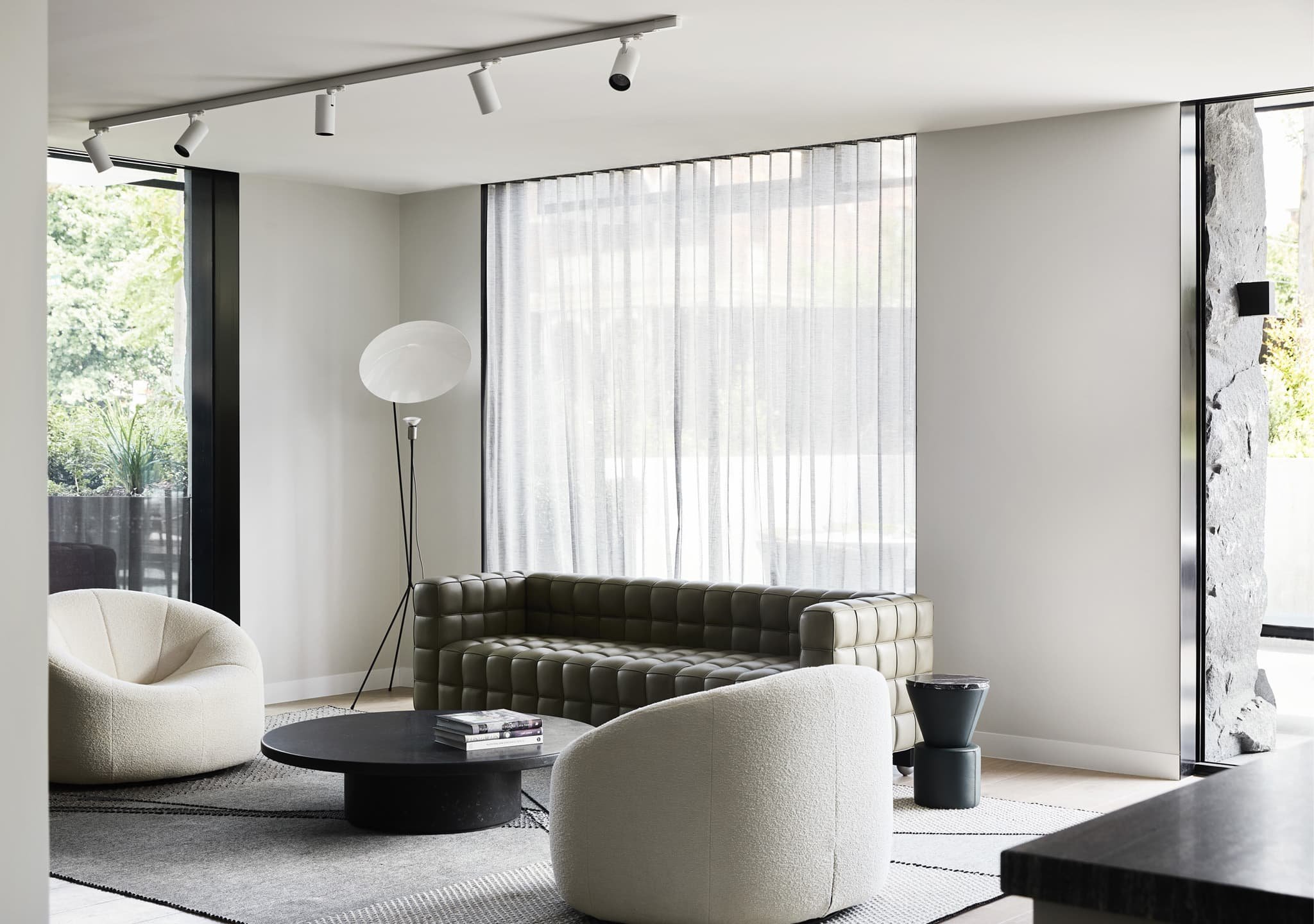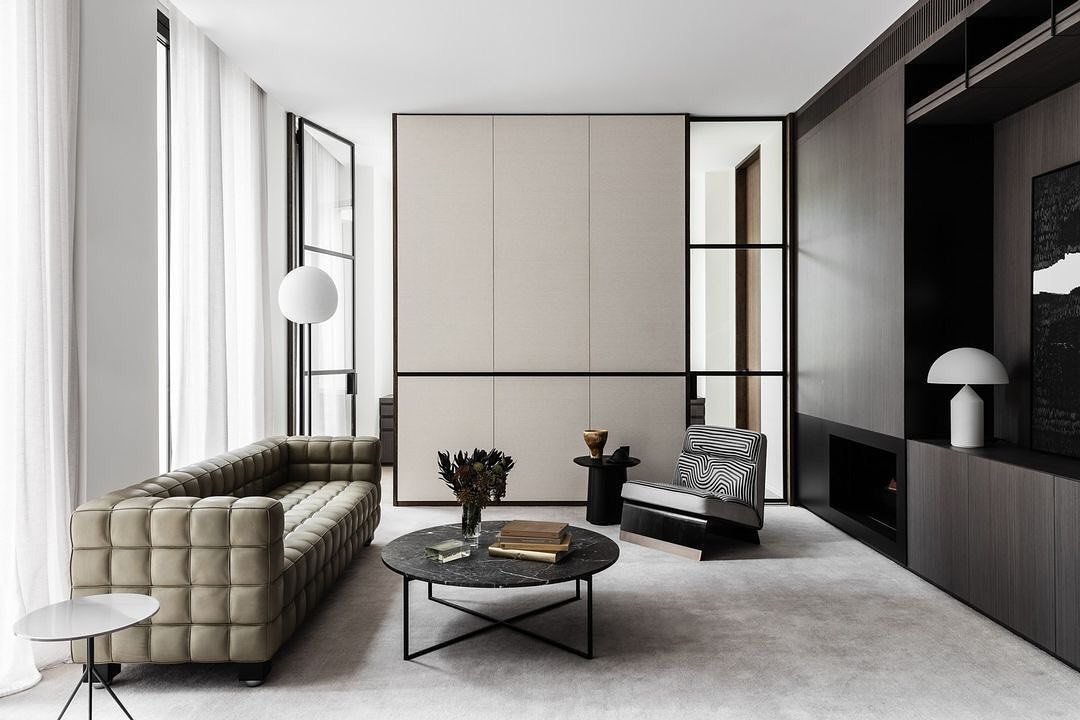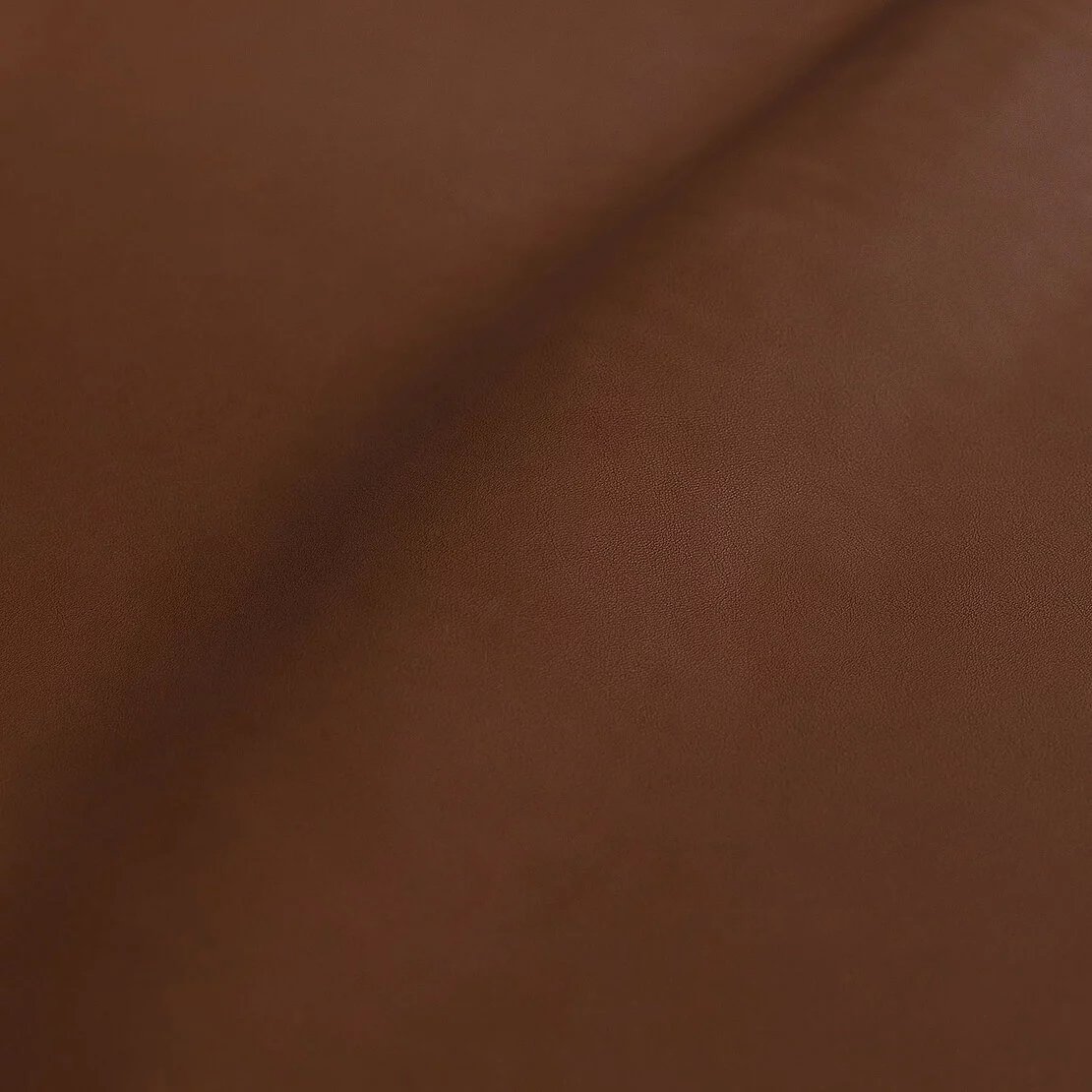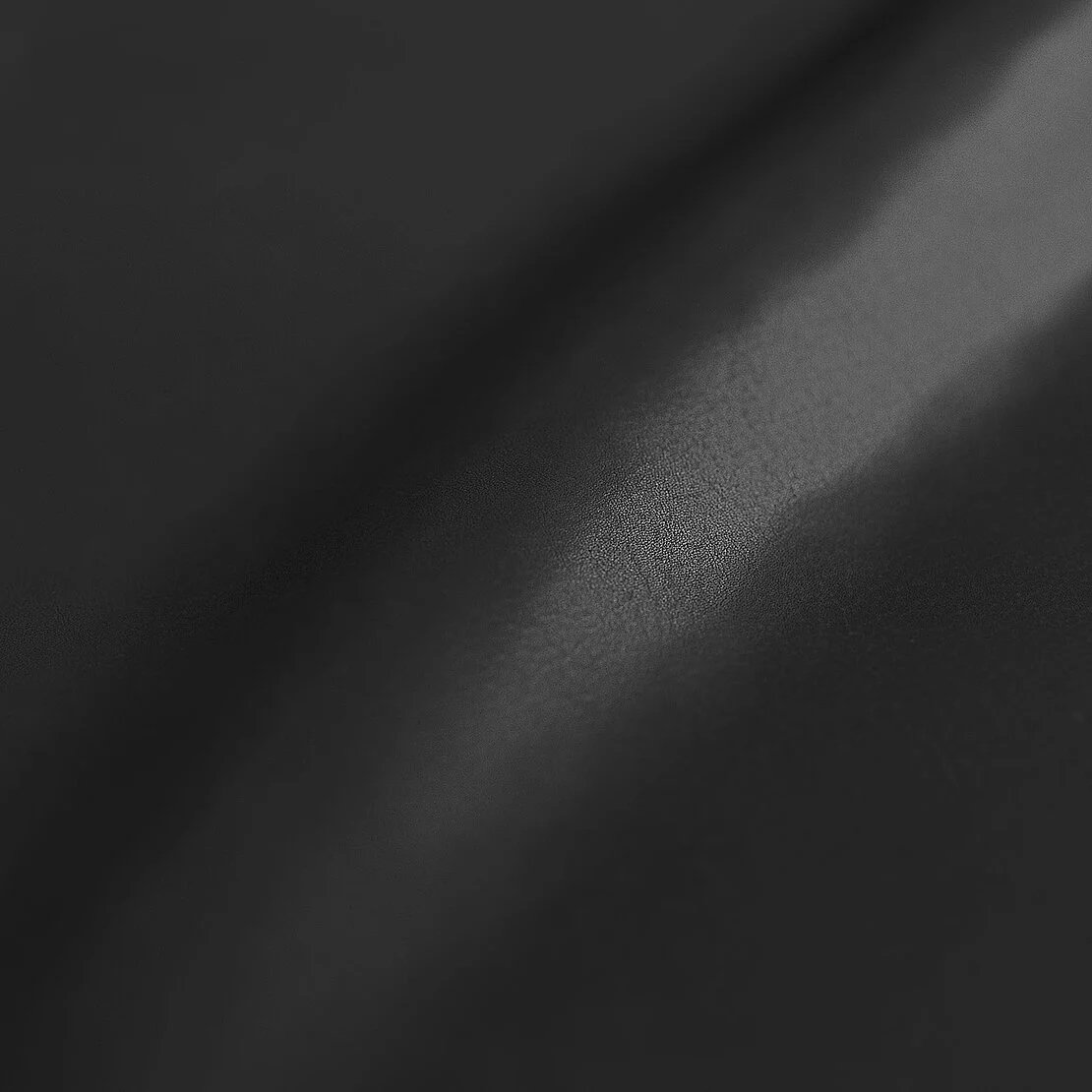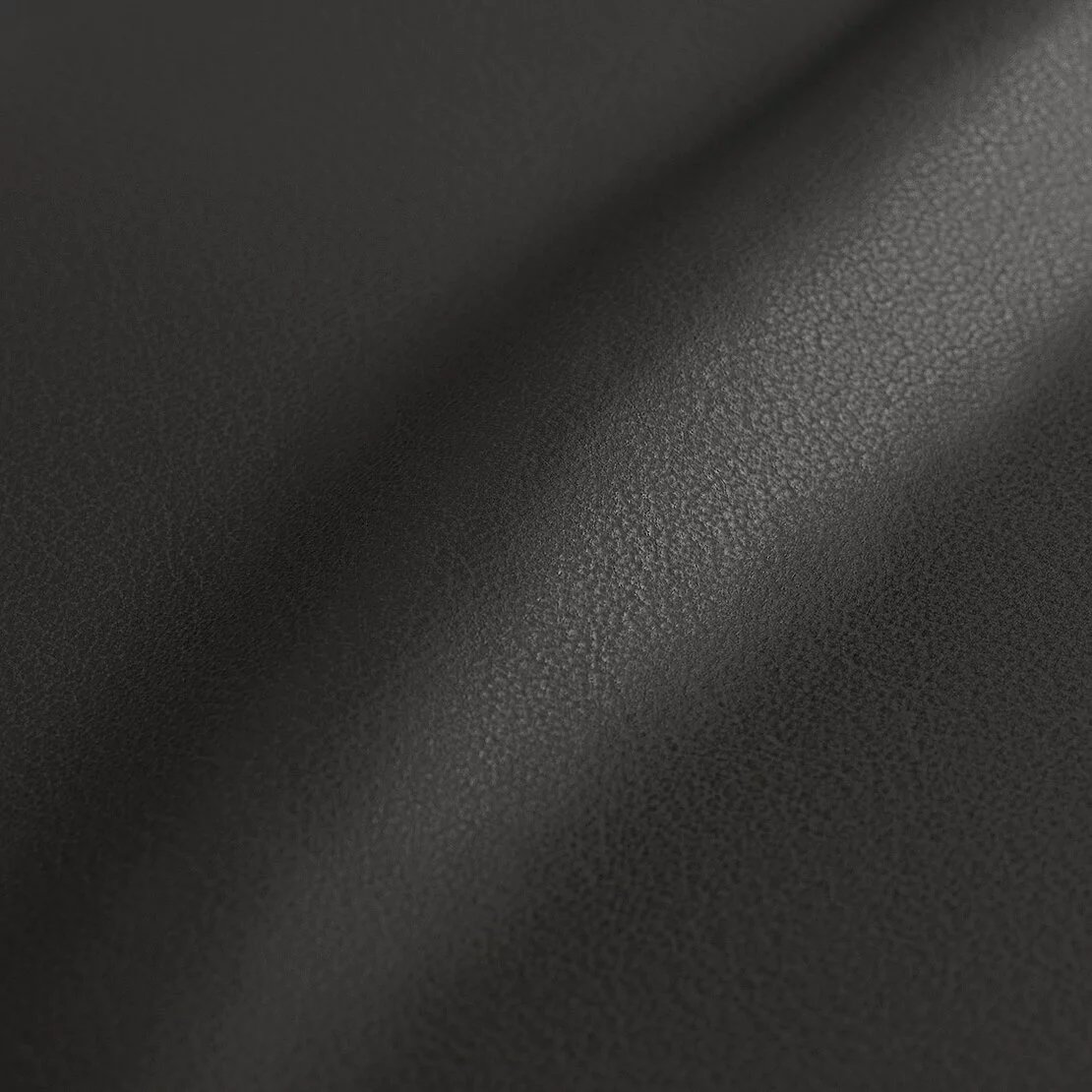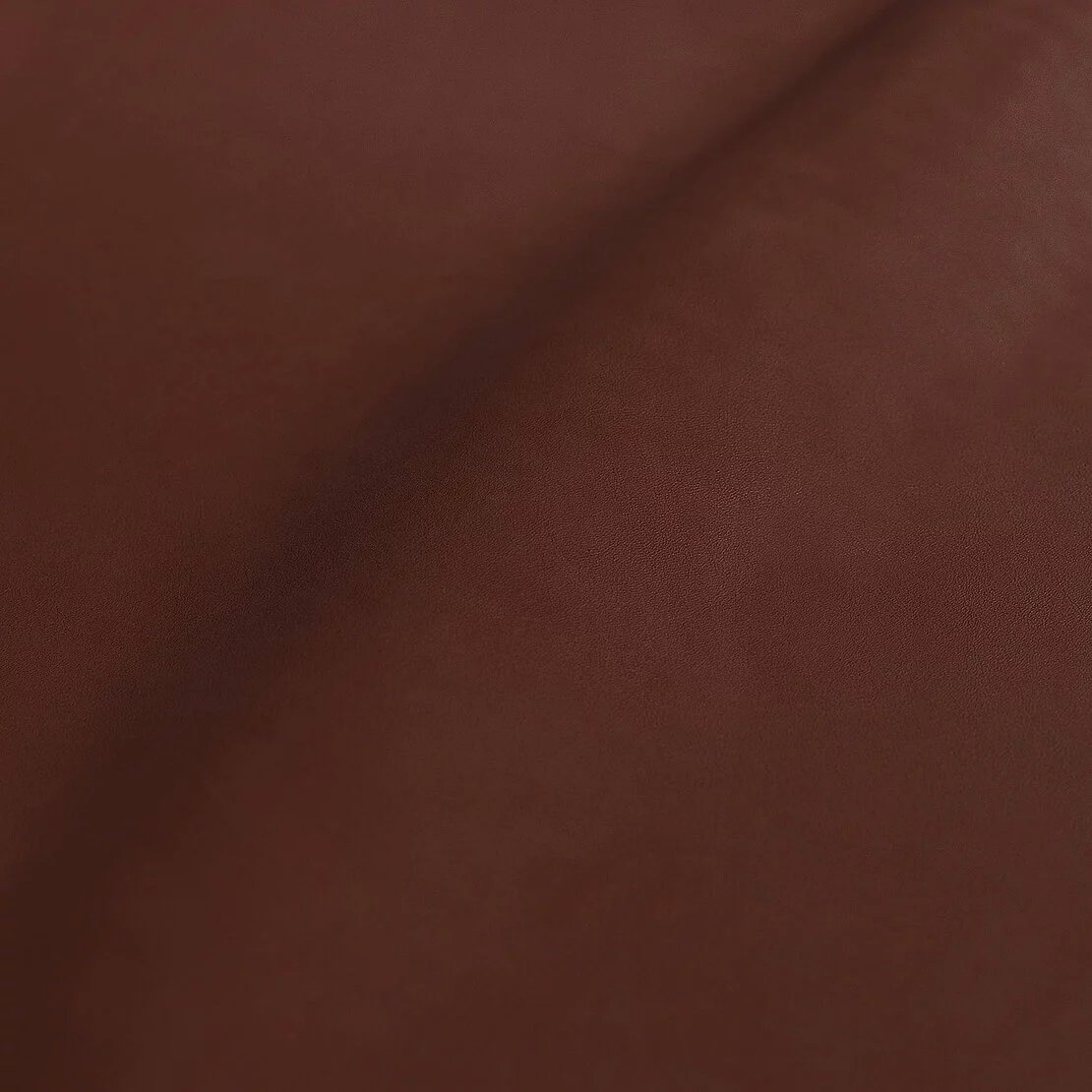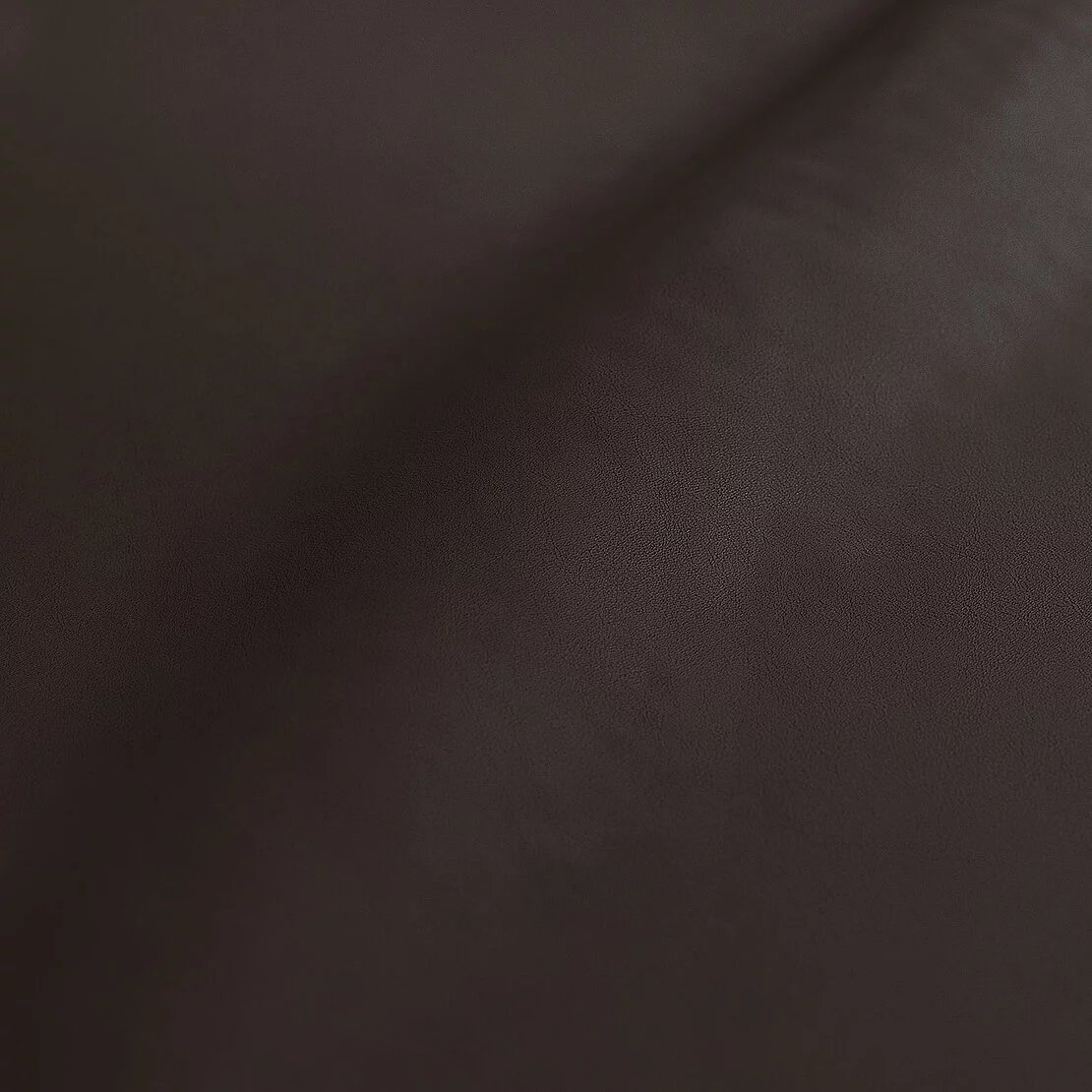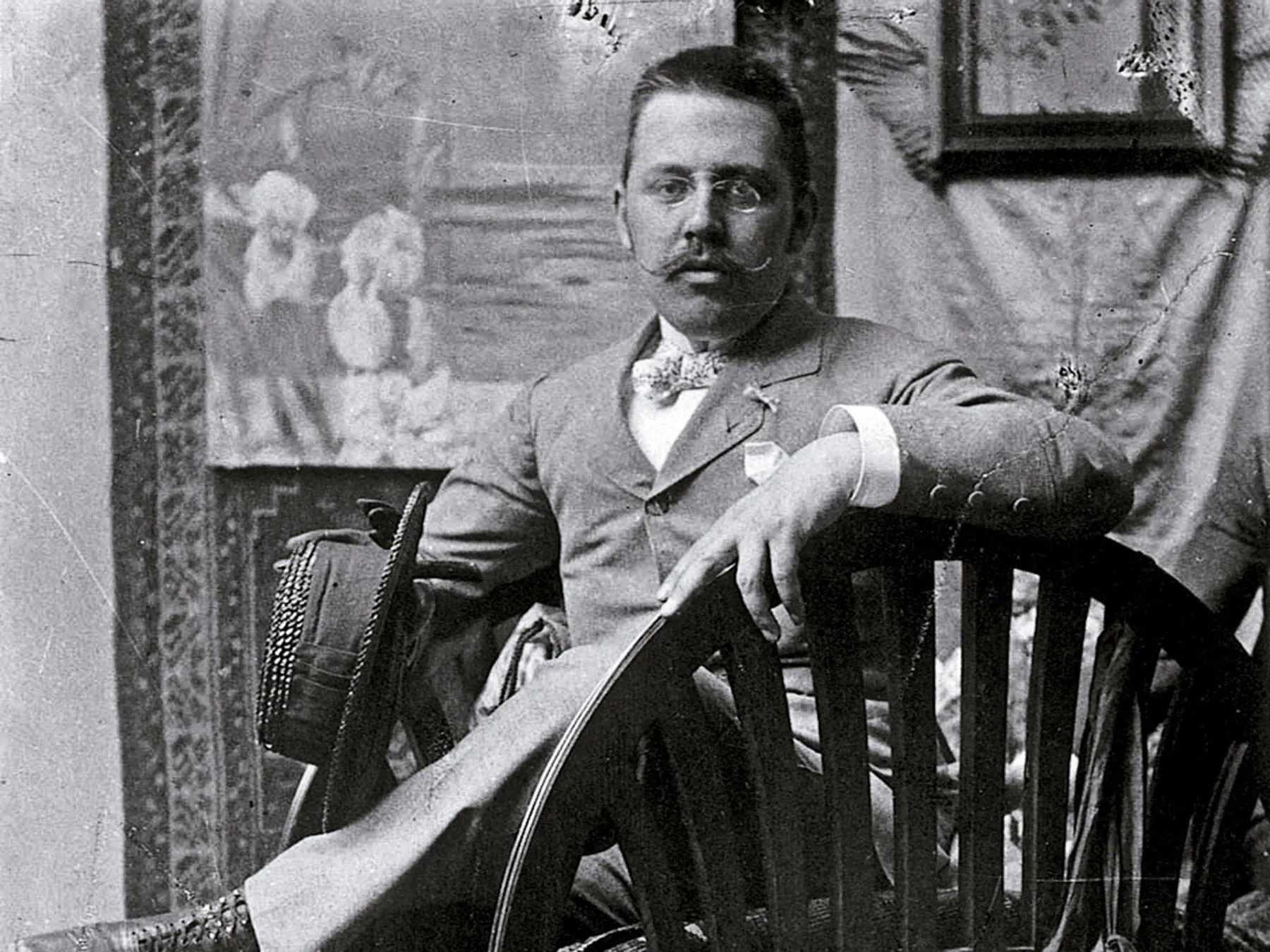A STRUCTURE STANDING TIME
The Kubus Sofa, designed in 1910 by Josef Hoffmann and masterfully revived in 1959 by Wittmann Möbelwerkstätten, remains an iconic testament to Hoffmann’s precise geometric aesthetic. A leather cube in which all surfaces—whether outside or inside—are covered with a cube-shaped pattern. The squares, with recessed edges and raised centers, unintentionally remind the viewer of cobblestone paving expanded into three dimensions. Yet the design is not just a gimmick—the striking structure logically and appropriately arises from the leather’s processing requirements. Unlike traditional English leather sofas, Hoffmann extends the square structure of each sewn panel to the entire structure of the chair, creating a direct relationship between large and small forms without turning it into an obsessive pattern. Alongside the cubic form, the arched, rounded shape naturally prevails—dictated by the material’s properties—which is evident not only in the individual bulges of the leather compartments but also in the wooden hemispheres on which the chair rests.
Josef Hoffmann was an Austrian-Moravian architect and designer. He was among the founders of Vienna Secession and co-establisher of the Wiener Werkstätte. His most famous architectural work is the Stoclet Palace, in Brussels, (1905–1911) a pioneering work of Modern Architecture, Art Deco and peak of Vienna Secession architecture.
In 1903, along with Koloman Moser, and banker Fritz Wärndorfer, who provided most of the capital, he launched a much more ambitious venture, the Wiener Werkstätte, an enterprise of artists and craftsmen working together to create all the elements of a complete work of art, or Gesamtkunstwerk. Hoffmann designed a wide variety of objects for the Wiener Werkstätte. Some of them, like the Sitzmaschine Chair, a lamp, and sets of glasses are on display in the Museum of Modern Art in New York and a tea service in the collection of the Metropolitan Museum of Art. Many of the works were hand-made by the artisans of the group and some by industrial manufacturers. Some of Hoffmann's domestic designs can still be found in production today, such as the Rundes Modell cutlery set that is manufactured by Alessi. Originally produced in silver, the range is now produced in high quality stainless steel. Another example of Hoffmann's strict geometrical lines and the quadratic theme is the iconic Kubus Armchair. Designed in 1910, it was presented at the International Exhibition held in Buenos Aires on the centennial of Argentinean Independence known as May Revolution. Hoffmann's constant use of squares and cubes earned him the nickname Quadratl-Hoffmann ("Square Hoffmann"). Hoffmann's style gradually became more sober and abstract and his work was limited increasingly to functional structures and domestic products.
The workshop concept flourished in its early years and spread. In 1907, Hoffmann was co-founder of the Deutscher Werkbund, and in 1912 of the Österreichischer Werkbund (or Austrian Werkbund). But the workshop ran up against the First World War and then the Great Depression, which hit Germany and Austria especially hard. It was forced to close in 1932.
Wittmann Möbelwerkstätten is a family business in its fourth generation, renowned for top quality, design, craftsmanship, and innovation. The Austrian company began in 1896 as a saddlery in Etsdorf am Kamp. Today, Wittmann collaborates with internationally renowned designers to make a true Wittmann piece a unique furnishing item.
Sofa. A classic example of Hoffmann’s strict geometrical lines and the quadratic theme in his work is the Kubus.
‘Natural’ leather by Wittmann. Utilization: Anilin. Certificates include: CAL TB117-2013 & EN1021 1+2.

